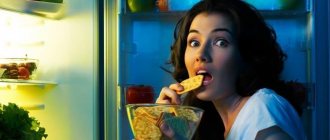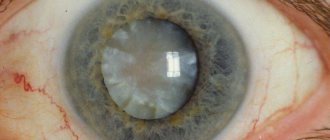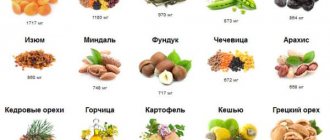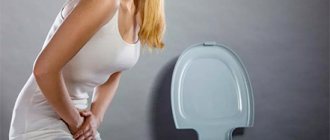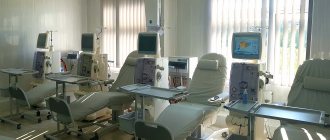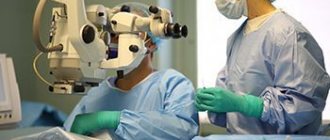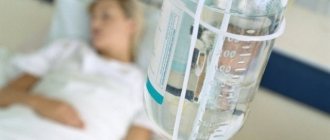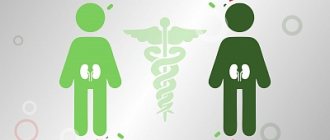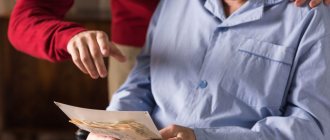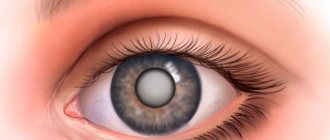How to eat in the first days after kidney removal surgery
For 2 days after organ removal, it is prohibited to consume any food or drink. To provide the body with the necessary substances, they resort to parenteral nutrition, that is, the administration of nutrient solutions through a dropper. The main goal of therapy when removing a paired organ is to provide nutrients (biologically significant elements) in the quantities required for the body.
After 2-3 days, when the state of health has stabilized, a gentle diet with fractional meals is prescribed. During this period, it is recommended to eat only freshly prepared food.
Diet for one kidney removed immediately after nephrectomy:
- The menu is based on low-fat fermented milk products;
- table salt is limited to 3 g/day;
- meat dishes are excluded completely;
- vegetarian dishes made from stewed vegetables are healthy;
- eat up to 5-6 times a day;
- other products are introduced into the menu gradually.
The main goal of the diet after organ removal is to reduce the toxic load on the remaining kidney.
The amount of fluid depends on the person’s condition and is determined by the urologist.
In order not to overload the urinary system, drink 0.7-1 liters of water per day.
Prognosis for recovery
If all the rules of proper nutrition are followed, the prognosis for patients with one kidney is positive. If during the recovery period unpleasant symptoms develop, it is recommended to consult a doctor, he will make a diet correction.
Dietary nutrition plays a significant role in the body’s recovery processes. Restricting the diet of certain foods will allow a healthy kidney to perform the functions of both organs in a short time.
Kidney removal surgery is performed on patients in extreme cases (large stones, malignant tumors, etc.).
In order for the body to recover faster and a healthy kidney to function fully, the patient must follow strict nutritional rules. It is important to remember that diet after nephrectomy is the key to future health.
Important dietary points
In the first month after organ removal, you must strictly follow medical recommendations. If you ignore nutritional rules, the urinary system experiences excessive stress, which leads to complications. Diet after kidney surgery stimulates adaptation of the functioning organ.
Diet
Fractional nutrition is a key principle of the diet that must be followed during rehabilitation. If a person has only one kidney, they should:
- have breakfast 30-40 minutes after waking up;
- eat every 1.5-2 hours;
- have dinner at least 2 hours before bedtime.
Fasting during organ removal is contraindicated. Violation of diet conditions leads to an increase in the amount of purines and other metabolites in the blood. Because of this, the toxic load on the kidney increases. Therefore, during rehabilitation, it is advisable to eat food 5 times a day.
Serving Size
Dietary nutrition after kidney removal is recommended for 6 months to 1.5 years. The serving size is determined by the fist rule - the volume of a person’s stomach corresponds to a fist. Therefore, at one time they eat an amount of food that is approximately equal to its size.
More precisely, the serving volume is determined as follows:
- a woman's palm corresponds to 100 g of poultry or fish;
- 1 handful contains a serving of pasta, vegetable salad or porridge;
- 200 g of meat corresponds to the volume of a woman’s fist.
According to statistics, more than 25-30% of people cannot determine the serving size in grams by eye. To prevent overeating, it is better to purchase a kitchen scale.
Cooking methods
As part of the diet, it is advisable to avoid fried meat, vegetables and fish. Such dishes contain carcinogens and purines, which increase the load on the kidney by 1.5-2 times. Postoperative nutrition should be gentle, so nephrologists advise stewing, boiling and baking foods.
If you are prone to constipation, you should eat baked apples three times a week.
How much are you allowed to drink?
After nephrectomy, the load on the remaining kidney increases significantly. Therefore, when an organ is removed, patients are warned about the need to adhere to the drinking regime:
- in the first month after discharge, drink no more than 0.5-0.7 liters of liquid per day;
- gradually the daily volume of water is increased to 1 liter;
- 1.5 hours before bedtime, try not to drink fermented milk drinks.
If the performance of the second kidney is reduced, the diet is adjusted. If there are stones in the organ, preference is given to acidic or alkaline mineral waters, depending on the type of stones.
Daily calorie content
If a person has had one kidney removed, he must monitor the calorie content of his diet. The permissible energy value of the daily menu is 2800-3000 kcal/day.
Optimal amount of nutrients:
- carbohydrates – 450-500 g;
- fats – up to 90 g;
- proteins – no more than 80 g.
With concomitant pathologies of the gastrointestinal tract and urinary system, the calorie content of the diet is adjusted.
If a kidney is removed, they eat only natural, easily digestible food without dyes.
Diet for people with one kidney: food lists
An unbalanced diet leads to hypovitaminosis and immunodeficiency, which are dangerous complications. When removing a kidney, you need to eat fortified foods with the required amount of minerals and amino acids. The basis of the diet in case of kidney excision is fresh fruits and boiled vegetables, as they contain the maximum amount of nutrients.
Mandatory
The diet includes foods that all people who have had a nephrectomy need to eat. They have diuretic properties and contain components that normalize metabolism and prevent acid-base imbalance.
What foods can you eat after kidney removal:
- pumpkin – removes toxic substances;
- watermelon - washes away salts and pathogenic flora;
- melon – replenishes the deficiency of folacin and iron;
- carrots – stimulates kidney function;
- cranberry – disinfects the urinary tract;
- blueberries – prevents the formation of sand.
When removing an organ in old age, decoctions of rosehip and bearberry are especially useful. They stimulate urination and replenish the lack of ascorbic acid and vitamin E in the body.
Featured
As part of the diet, all types of heat treatment of food are allowed (except frying), so it is not difficult to follow. To diversify the menu as much as possible after organ removal, more fortified foods are added.
To season second courses, use sauces with low-fat sour cream or olive oil. They do not irritate the organs of the urinary system and gastrointestinal tract.
What can you eat after kidney removal:
- Flour products. For those who have undergone nephrectomy, salt is limited to three to five grams per day. Therefore, only salt-free flour products with a minimum amount of proteins are included in the diet.
- Meat. When preparing dishes, preference is given to lean meat - veal, rabbit, chicken fillet. When a kidney is removed, meat dishes are included in the diet up to three times a week.
- Fish. They prefer pollock, pollock, hake and blue whiting. It is allowed to boil, stew and bake fish with vegetables.
- Dairy products. Milk is consumed in small quantities. According to the diet, it is better to give preference to kefir, fermented baked milk and sour cream. They contain almost no calcium, which provokes stone formation in the kidney after the second one is removed.
- Porridge. To prevent constipation and intoxication, eat oatmeal and buckwheat porridge.
- Beverages. When removing one kidney, diluted juices, fruit drinks, jelly, rosehip decoction, bearberry infusion, and kidney tea are useful.
- Vegetables. Those who have undergone nephrectomy are allowed almost all vegetables - carrots, squash, potatoes, beets, eggplants, cauliflower. But due to the restriction of table salt, canned tomatoes and cucumbers are excluded from the diet.
In the first six months or at least 2-3 months after organ removal, baked pears and apples with honey are especially useful.
Completely or partially prohibited
Extractive (rich) dishes are removed from the diet. It is important that the diet after removal of a kidney with a tumor does not burden the gastrointestinal tract and urinary system. Therefore, they refuse difficult-to-digest foods - mushrooms, legumes, fatty meats.
When one kidney is removed, a ban on alcoholic beverages, hot sauces and spices is imposed for life.
What should not be consumed by patients after a single kidneyectomy:
- meat – goose, pork, duck, smoked chicken;
- vegetables - leafy, legumes, parsley, garlic, radish;
- seasonings and sauces - chili pepper, ketchup, adjika, mustard;
- drinks – strong tea, concentrated juices, coffee, soda;
- fish – ivasi, nelma, saury, stellate sturgeon, halibut, sturgeon.
When dieting, it is not advisable to use cooking oil or margarine in dishes. They increase the load on the gastrointestinal tract.
Authorized Products
Diet after kidney removal includes:
Baked lean meat
- Protein-free, salt-free bread, bran, unsalted cookies. Their consumption rate is up to 400 g per day. Typically, protein-free bread is baked from protein-free flour, which is made from potato or corn starch.
- Soups with cereals, vegetables, pasta in vegetable broth. The food is not salted during the cooking process. Salt is added during meals. Vegetable oil or butter is used to season dishes.
- For second courses, dietary meats are used: veal, beef, chicken or turkey, rabbit meat in the amount of 100 g per day. Meat dishes are introduced 2-3 weeks after surgery.
- Meat, poultry and fish are prepared in pieces, as well as in the form of baked or steamed cutlets, quenelles and meatballs.
- Low-fat varieties of fish (cod, pike, hake, pollock, blue whiting, ice fish) can be stewed, boiled, baked, or prepared in minced meat dishes.
- Your diet should include fish or meat every day. Since fish protein carries less load on the urinary system, preference should be given to it.
- Chicken eggs (2 pieces per day) boiled or scrambled eggs, quail eggs are useful.
- Low-fat dairy products should be consumed in limited quantities, since calcium can lead to the formation of microlites . It is better to consume fermented milk products and limit milk.
- Vegetables (beets, tomatoes, potatoes, carrots, cauliflower, lettuce, cucumbers). You can eat salads or cook baked vegetables.
- Include any fruit in the menu every day, and in season - watermelons and melons. You can eat fruit and berry mousses, jams, preserves, and jellies.
- All cereals are allowed, but preference should be given to buckwheat and oatmeal. You can use them to prepare casseroles, cereals with cottage cheese and porridge. Unsalted butter can be used to season dishes.
- When it comes to pasta, you should choose protein-free ones.
- Mild and unsalted cheeses can be consumed as snacks.
- Give preference to sauces based on sour cream, fruits, vegetables, and vegetable oils.
- The preferred drinks are weak tea with milk, herbal infusions, weak green tea, compotes, diluted juices (fruit and vegetable), rosehip infusion and wheat bran infusion.
Table of permitted products
| Proteins, g | Fats, g | Carbohydrates, g | Calories, kcal | |
Vegetables and greens | ||||
| cauliflower | 2,5 | 0,3 | 5,4 | 30 |
| potato | 2,0 | 0,4 | 18,1 | 80 |
| carrot | 1,3 | 0,1 | 6,9 | 32 |
| cucumbers | 0,8 | 0,1 | 2,8 | 15 |
| salad | 1,2 | 0,3 | 1,3 | 12 |
| beet | 1,5 | 0,1 | 8,8 | 40 |
| tomatoes | 0,6 | 0,2 | 4,2 | 20 |
Fruits | ||||
| apricots | 0,9 | 0,1 | 10,8 | 41 |
| watermelon | 0,6 | 0,1 | 5,8 | 25 |
| melon | 0,6 | 0,3 | 7,4 | 33 |
| nectarine | 0,9 | 0,2 | 11,8 | 48 |
| peaches | 0,9 | 0,1 | 11,3 | 46 |
| apples | 0,4 | 0,4 | 9,8 | 47 |
Nuts and dried fruits | ||||
| raisin | 2,9 | 0,6 | 66,0 | 264 |
| dried apricots | 5,2 | 0,3 | 51,0 | 215 |
| prunes | 2,3 | 0,7 | 57,5 | 231 |
Cereals and porridges | ||||
| buckwheat (kernel) | 12,6 | 3,3 | 62,1 | 313 |
| semolina | 10,3 | 1,0 | 73,3 | 328 |
| cereals | 11,9 | 7,2 | 69,3 | 366 |
| pearl barley | 9,3 | 1,1 | 73,7 | 320 |
| Wheat groats | 11,5 | 1,3 | 62,0 | 316 |
| white rice | 6,7 | 0,7 | 78,9 | 344 |
Confectionery | ||||
| jam | 0,3 | 0,2 | 63,0 | 263 |
| jam | 0,3 | 0,1 | 56,0 | 238 |
| jelly | 2,7 | 0,0 | 17,9 | 79 |
Raw materials and seasonings | ||||
| honey | 0,8 | 0,0 | 81,5 | 329 |
| sugar | 0,0 | 0,0 | 99,7 | 398 |
| milk sauce | 2,0 | 7,1 | 5,2 | 84 |
| sour cream sauce | 1,9 | 5,7 | 5,2 | 78 |
Dairy | ||||
| kefir | 3,4 | 2,0 | 4,7 | 51 |
| cream | 2,8 | 20,0 | 3,7 | 205 |
| sour cream | 2,8 | 20,0 | 3,2 | 206 |
| curdled milk | 2,9 | 2,5 | 4,1 | 53 |
Cheeses and cottage cheese | ||||
| cottage cheese | 17,2 | 5,0 | 1,8 | 121 |
Meat products | ||||
| beef | 18,9 | 19,4 | 0,0 | 187 |
| veal | 19,7 | 1,2 | 0,0 | 90 |
| rabbit | 21,0 | 8,0 | 0,0 | 156 |
Bird | ||||
| chicken | 16,0 | 14,0 | 0,0 | 190 |
| turkey | 19,2 | 0,7 | 0,0 | 84 |
Eggs | ||||
| chicken eggs | 12,7 | 10,9 | 0,7 | 157 |
| quail eggs | 11,9 | 13,1 | 0,6 | 168 |
Oils and fats | ||||
| vegetable oil | 0,0 | 99,0 | 0,0 | 899 |
| peasant unsalted butter | 1,0 | 72,5 | 1,4 | 662 |
Non-alcoholic drinks | ||||
| black tea with milk and sugar | 0,7 | 0,8 | 8,2 | 43 |
Juices and compotes | ||||
| juice | 0,3 | 0,1 | 9,2 | 40 |
| jelly | 0,2 | 0,0 | 16,7 | 68 |
| rose hip juice | 0,1 | 0,0 | 17,6 | 70 |
| * data is per 100 g of product | ||||
Sample menu for the week
A balanced diet after kidney resection speeds up the adaptation of the urinary system to changes. Following a diet reduces the likelihood of metabolic disorders, nephrolithiasis, hydronephrosis, and kidney failure.
Menu for 1 week for patients who have undergone kidney removal
| Days of the week | 1 breakfast | 2 breakfast | Dinner | Afternoon snack | Dinner |
| Monday | protein omelet, oatmeal cookies, bearberry decoction | fruit salad | cream soup with shrimp, vinaigrette, jelly | 2 slices of watermelon | buckwheat, cabbage schnitzel, compote |
| Tuesday | vinaigrette, 1 apple, diluted juice | baked apple with honey | stuffed peppers, vegetable stew, rosehip broth | cottage cheese casserole with blueberries | vegetable broth soup with dumplings, cranberry juice |
| Wednesday | oatmeal with butter, toast with jam, bearberry infusion | curd pudding | dietary borscht, croutons, diluted juice | 2 slices of melon, rosehip decoction | boiled pollock with jacket potatoes, tea with milk |
| Thursday | muesli, boiled egg, rosehip infusion | oatmeal cookies with tea | vegetarian soup, boiled chicken fillet, compote | pumpkin pie | vegetable stew, fish cutlets, vegetable juice |
| Friday | buckwheat, salt-free bread with jam, berry juice | 100 g raspberries, kefir | noodle soup, pilaf with raisins, fruit juice | baked pear | vinaigrette, cucumber salad, rosehip infusion |
| Saturday | fruit pudding, berry juice | semolina | cauliflower soup, baked hake with carrots, tea | biscuits, apple compote | ratatouille with eggplant, boiled veal, tea |
| Sunday | carrot pancakes, drinking yogurt | berry soufflé, carrot juice | lean borscht, shrimp puree, compote | muffins with dried fruits | beetroot, wheat porridge, bearberry infusion |
When removing one kidney, nephrologists recommend thinking through a diet menu for at least 1 week. This reduces the likelihood of disruption of balanced nutrition and monotony.
Nutrition Basics After Nephrectomy
The diet for kidney removal is developed by the doctor individually for each patient. In this case, factors are taken into account: characteristics of the body, age, presence of chronic diseases (diabetes mellitus). The goals of therapeutic nutrition are:
- reducing the load on the urinary organs and adrenal glands;
- reducing the intake of harmful substances into the body and accelerating their elimination;
- prevention of the development of infectious and inflammatory processes in the kidney;
- prevention of stone formation and development of urolithiasis;
- minimizing the risk of renal failure;
- acceleration of the process of adaptation of the remaining organ to increased loads.
Advice! Human behavior, as well as medicinal food, plays a key role in the reparative period, so increased attention should be paid to it. This is especially true for older people, since the body's adaptive functions decrease and it may take longer for them to recover.
Among the basic principles of dietary nutrition, doctors highlight the following:
- reducing the proportion of proteins in the diet to 70-80 g per day;
- reducing the amount of salt consumed to 3-5 g (add salt to ready-made dishes);
- limiting the volume of incoming liquid to 1-1.2 l;
- split meals with several snacks;
- Preferred cooking methods: boiling, stewing, baking, steaming.
Food should be varied, high-calorie, maintaining an energy value of 2800-3000 kcal. The menu is based on fruits and vegetables - the main sources of vitamins and minerals.
The first days of the postoperative period
Nutrition after kidney removal depends on the stage of rehabilitation; in the first days after surgery, protein and salt are excluded from the diet, and fluid intake is determined by diuresis.
You are not allowed to consume anything other than water for several hours after the operation. It helps to quickly recover from anesthesia and adapt the remaining kidney to new living conditions.
It is important to know! The first week is considered the most difficult. The patient experiences a feeling of constant hunger, since the diet is devoid of a protein component. He cannot get enough, so the likelihood of a deterioration in mood and the development of a nervous and eating breakdown increases.
It will help you to recover faster and easier by realizing that these are only temporary restrictions that are a necessary precaution.
Portion size and diet
Starting from the second week, it is allowed to switch to a normal diet. It involves eating 5-6 meals a day in small portions. A small amount of food is well digested, at the same time the feeling of hunger disappears, and your health improves. In the postoperative period, it is important to control the volume of fluid, since its deficiency can lead to dehydration, and an excess can provoke kidney failure, which will cause the development of insufficiency. On days 7-10, a small amount of steamed or boiled protein products should be included in the menu.
A diet prescribed for the presence of only one kidney in the body requires a strict balance of proteins, fats and carbohydrates. But since it is difficult to calculate the content of each of them at home, nutritionists suggest using the “plate” principle. Its surface is conventionally divided into four parts, two of which are filled with vegetables, and the rest are distributed between a protein product (meat, fish) and a side dish of cereals or pasta. In this case, you need to ensure that the portion is small.
Cooking methods
Dietary nutrition involves a number of restrictions, but, nevertheless, remains quite varied. Food is prepared according to the rules of traditional technology, but taking into account the specifics of the condition, certain requirements are put forward for the choice of products and methods of preparation. The assortment should consist of boiled dishes. It is preferable to steam chopped meat and fish products, and poach vegetables and fruits. This increases the safety of many nutrients and taste. Cook soups and sauces in water or vegetable broth. In order to improve the taste of a salt-free diet, it is recommended to season dishes with sour and sweet gravies, sauces, and use the table salt substitute “Sonasol”.
What is possible and what is not
To ensure that the remaining kidney remains healthy and functions without interruption, it is necessary to take into account the recommendations of specialists regarding the use or limitation of certain products. Below is a list of what you can eat after kidney removal.
- Vegetable or cereal soups without salt.
- Lots of fruits, especially melons, jellies, jams, mousses.
- Low-fat varieties of meat or fish in the form of meatballs, cutlets, quenelles. It is useful to eat rabbit meat and poultry.
- Homemade protein-free bread using corn or potato starch and no salt.
- Low-fat dairy products in limited quantities, unsalted cheeses.
- Cereals in the form of porridges or side dishes, preference is given to buckwheat or oatmeal.
- Pasta without protein.
- Sauces with vegetable oil or sour cream.
- Drinks - decoctions of rose hips, herbs, wheat bran, weak tea, diluted juices, fruit drinks.
It is important to know! The diet after kidney removal, especially for cancer, involves consuming foods rich in antioxidants. They slow down oncological processes and prevent the spread of metastases - cancer cells.
Sample list:
- seaweed;
- pomegranate;
- broccoli;
- green tea.
The following foods and dishes should be removed from the diet:
- fatty meat, fish;
- smoked, spicy food;
- marinades, pickles, preserves;
- baked goods and freshly baked bread;
- sweet soda, alcohol, energy drinks;
- fast foods and semi-finished products:
- rich broths and their first courses;
- confectionery.
It is not recommended to consume legumes, as well as sorrel, spinach, radishes, and garlic. Patients are prohibited from fasting or eating dry food or on the run.
Diet after discharge home
After discharge, the patient is advised to wear a special bandage. Full recovery (in the absence of early complications) occurs after 6-8 months. To reduce the negative effects, you must adhere to a strict diet. When a kidney has been removed, you should check with your doctor about what to eat. The menu should be varied and contain vitamins and beneficial microelements in the right quantities. Salt, which should be limited, can be replaced with cinnamon, cumin, and citric acid. This will improve the taste of the prepared dishes. To prevent constipation, it is recommended to include prunes, apricots, and baked apples in your diet. The volume of fermented milk products should also be limited, since an excess of it leads to the formation of sand in the kidney.
Menu for a week for patients after removal of a kidney with a tumor
There are a large number of different ideas for organizing nutrition after kidney resection - the patient can only choose the most suitable one and adopt it. One option for a seven-day menu after kidney removal, explaining what you can eat, is presented below and can be a good basis for creating a diet.
| Days of the week | Breakfast | Lunch | Dinner | Afternoon snack | Dinner |
| Monday | Vinaigrette Slice of bread Green tea | Cottage cheese Rose hip decoction | Vegetable soup Boiled meat Dried fruit compote | Krupennik Yogurt | A glass of kefir |
| Tuesday | Oatmeal with berry mousse, Lingonberry decoction | Curd pudding with currants Glass of juice | Potato soup Fish cutlets Boiled rice Weak tea | Berry smoothie Unsalted crackers | Vegetable casserole Cucumber salad Kissel |
| Wednesday | Semolina porridge Compote | Blueberry pudding Green tea | Creamy potato and tomato soup Pumpkin and zucchini gratin Peach juice | Apple semolina biscuits Fruit jelly | Beet salad Boiled fish Wheat porridge Compote |
| Thursday | Curd dessert Pear juice | Baked apples with honey Rosehip decoction | Liver soufflé Baked eggplant Herbal tea | Cranberry infusion Carrot cookies | Millet porridge Baked vegetable salad Cranberry juice |
| Friday | Biscuits with jam Unsweetened tea | Yogurt with pieces of fruit | Vegetable broth with croutons Potato quenelles Watermelon | Pumpkin Pie Herbal Tea | Peppers stuffed with rice Baked perch with vegetables Diluted fresh juice |
| Saturday | Cottage cheese casserole with raspberries Lingonberry jelly | Berry soufflé Fruit smoothie | Creamy shrimp soup Dietary pilaf Cucumber and tomato salad Compote | Cupcakes with raisins Kefir | Pike perch with vegetables Carrot stew Apple jelly Herbal tea |
| Sunday | Vermicelli casserole Compote | Wholemeal dumplings with cherries and sour cream | Soup with chicken dumplings Vegetable salad Stewed zucchini Compote | Biscuits Apple jelly | Boiled fish Potato salad Baked pears and apples Kefir |
One kidney requires careful selection of ingredients and the right combination. Therefore, when compiling a seven-day diet, you should have a list of permitted and prohibited foods on hand. With food, the body should receive a maximum of vitamins and nutrients.
Healthy food recipes
Milk cabbage soup
Compound:
- cauliflower – 1 fork;
- milk – 400 ml;
- carrots – 1 pc.;
- flour, butter, parsley root, dill to taste.
Boil fresh cabbage until soft in a small amount of water along with other vegetables. Pour in milk, bring to a boil, add flour fried in butter. Season with herbs.
Meat puree with rice
Compound:
- lean beef – 200 g;
- rice – 2 tbsp. l.;
- milk - ½ cup;
- butter – 1 tbsp. l.
Boil the meat and cereal separately until cooked. Cool slightly and pass through a meat grinder twice or grind in a blender. Place the dish on the fire, pour in hot milk, and stirring, heat for about five minutes. Remove from the stove, adding oil.
Dish recipes
The diet after kidney resection for cancer can and should be appetizing. To diversify it, the menu includes the following dishes:
- Baked hake. Grind 1 carrot on a grater. Place the hake fillet on a baking sheet lined with wax paper. Sprinkle the fillet with sesame seeds and cover with carrots. If desired, decorate the dish with lemon slices. Bake for at least 15 minutes.
- Vegetable cutlets. 1 large zucchini is grated and mixed with 1 egg. Add 2 tbsp. l. sour cream, 4 tbsp. l. chopped potatoes and the same amount of bran. Cutlets are formed from the thick mass. Cook for 15-20 minutes.
- Fruit mousse. Juice is squeezed out of ½ kg of raspberries. The cake is poured with 500 ml of boiled water and put on fire. After boiling, add 2 tbsp. l. decoys. Pour 50 g of granulated sugar and squeezed juice into the thickened mass. Fill the molds with it and put it in the refrigerator until it hardens completely.
- Omelette with vegetables. Beat 2 eggs with a whisk and add ½ liter of milk. In a frying pan, 2 tomatoes cut into slices and 1 sweet pepper are stewed. Pour in the egg-milk mixture and simmer with the lid closed for another 5-7 minutes.
Many foods are allowed in the diet, which significantly expands the range of foods suitable for consumption. Since it is undesirable to eat pastry creams and chocolate after removal of a paired organ, it is recommended to prepare desserts from sweet fruits with honey.
How long to follow a diet with one kidney
Features of rehabilitation after kidney removal depend on various factors. The duration of diet therapy is affected by:
- general health of the patient;
- performance of the urinary system;
- the presence of concomitant pathologies.
If the reason for organ removal is oncology, doctors advise following the diet rules for 12-15 months.
Removing a kidney is a radical operation that has a serious impact on your lifestyle. To speed up the body’s adaptation, you need to adhere to a gentle diet for 1.5 years. When following the recommendations of a nephrologist and nutritionist, it reduces the risk of complications and increases life expectancy.
Lifestyle after kidney removal
To summarize and generalize recommendations for patients with one kidney, I would like to say about the most important things.
After kidney removal, diet should become a way of life. The rules of nutrition and drinking regime must be observed every day and not come up with various excuses for yourself. Drinking alcohol after resection of a part of the kidney or its removal is strictly prohibited! It is important to remember this information once and for all.
Your diet may not remain the same after major surgery. It is a fact. And a diet will help a healthy organ tolerate increased stress much more effectively than all expensive medications.
